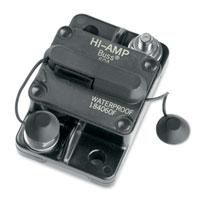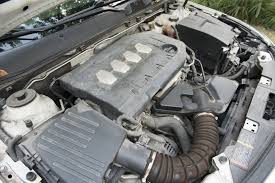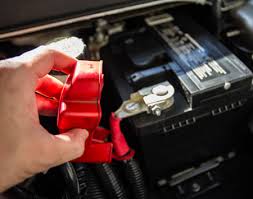How To Repair Damaged Laminate Flooring?
Whether it is for your home or for an office space, laminate flooring is often seen as a durable yet inexpensive option.
When correctly installed and properly looked after, laminate floors greatly enhance the look and feel of a room and can last for many years. However, even the strongest and most hard wearing materials can get worn and damaged over time. High traffic as well as pressure can cause wear and heat and moisture can create damage.
The following article looks at maintenance tips to help you prevent damage and keep your laminate in the best possible condition. In the event damage is more serious we will look at whether the laminate floor can be repaired or if it should it be replaced.
Scratches and chips
Scratches and chips caused by heavy traffic, household pets or items being dropped on the floor should be repaired as soon as possible. Using a laminate repair kit can help prevent scratches and chips from becoming larger and more visible.
How to prevent them?
While you may not be able to completely eliminate normal wear and tear that can cause minor damage, there are a number of things you can do to help prevent scratches and chips. For example use furniture pads under the legs of furniture pieces, don’t wear heels or heavy shoes on the laminate, keep pets claws trimmed, place mats or rugs on heavy traffic areas.
How to repair?
Purchase a laminate repair kit that matches your flooring and follow the instructions that come with the kit. Most kits will instruct you to apply the putty or wax over the scratches, then wipe away excess product and buff the edges to smooth and blend in with the rest of the floor.
Moisture damage
Moisture damage can be caused by water leaks from household appliances, spills, improper cleaning methods, house pets, relative humidity, building or plumbing leaks and flooding.
Damage caused by excessive moisture can include cupping or concave bow, convex bow or doming or any other warping or lifting and may unfortunately require the affected laminate planks to be replaced.
How to prevent it?
While accidental spills or leaks are sometimes unavoidable, there are a few things you can do to reduce the likelihood of damage caused by moisture.
- Ensure appliances are well maintained and replaced if they leak
- Maintain household plumbing
- Reduce humidity wherever possible
- Follow the manufacturers’ recommended cleaning methods.
How to repair?
Wiping up spills immediately is probably the best way to prevent water damage. A light spill is unlikely to cause lasting damage if cleaned up and dried immediately. Don’t forget to thoroughly dry the affected area using a dry cloth and if necessary a hair dryer or fan.
For more extensive damage your will need to find out if your damaged board / boards are repairable or need replacing.
Warping
Warping usually occurs when laminate flooring does not have enough space to contract and expand with temperature changes. Which is why warping commonly occurs on boards near the wall: when the walls expand in the heat, it leaves nowhere for the flooring to go and cause boards to warp.
How to prevent it?
It’s always recommended to have your laminate flooring installed professionally. Floor installers have knowledge and many years experience in how to best install planks to prevent warping and will allow for possible expansion.
How to repair?
Moderate warping can usually be resolved without needing to remove the affected planks. It will be necessary to remove the trim and moulding and replace the spacers between the planks with smaller ones. After replacing the spacers/insertions, press the warped board / boards back into place and replace the moulding.

How Do You Fix Laminate Floor Bubbling?
Fixing laminate floor bubbling and preventing it at its earliest appearance is essential if you want your floor to last. The following are tips to fix and prevent the problem:
- Inspect the affected area and find out if only one board is bubbling or a specific part of the floor is damaged. If only one board is causing trouble, it might be because its layer has lost cohesion.
- Replace the wall molding first with a screwdriver or hammer and then remove the damaged board. If you have snap and lock flooring, simply lifting the affected board will be enough.
- Replace the bubbled board with a new one. Make sure that you get the matching board or else you’ll get an uneven looking floor.
- After replacing the damaged board, ensure that the floor is sealed to avoid moisture penetrating or direct water damage in the future.
- If you have glued-down laminate flooring, make sure to wipe off excess adhesive after installing the new board.
- When you have a snap and lock system, it is easier to replace and repair it. You simply remove the affected board, check the moisture level of the subfloor and check whether the locking system is firm enough.
- If a large area of the floor is showing bubbles, the reason is inferior product. In that case, replacing the existing floor with a high-quality laminate is recommended.
- If there are loose veneers, they can be fixed by first making them pliable. Place a moist cloth on the veneer and iron it so it becomes more pliable. Make sure it does not crack or get damaged in the process. Use a quality wood glue under the veneer and, using a clamp, press it down. Place cardboard in between the laminate surface and the clamp to prevent marring during the process.
- Minor bubbles can be fixed by “bursting” them. Place a damp cloth on the bubble and cut a slit on the bubbled area using a sharp knife. Squeeze wood glue into the slit you have opened and press the veneer down. Place a weight overnight so that it is entirely flattened.
- In case the bubbling occurs due to peaking, it can be somewhat flattened by placing a weight over it throughout the night. Peaking happens due to expansion, and so the edges need to be slightly trimmed to accommodate the board after the bubbling is flattened. You can also create the necessary space by removing the moulding around it.

Replacing Damaged Boards Near the Edges
Remove any baseboards, thresholds, or molding from around the area.
Start at the side closest to the damaged board or boards. Carefully pry away baseboards and molding from the wall and pry thresholds up from any doorways with a pry bar.
- This method works when the damaged boards are close enough to the edge of the floor that it is possible to remove a small number of surrounding boards to get to the damaged boards and replace them.
- Try your best not to damage any of the pieces that you pry away so that you can replace them afterward.
Tip: If you don’t already have a replacement board, then you can remove the damaged board first and take it with you to a home improvement center or flooring supply store to help you find a matching one.
Lift out the boards starting with the ones closest to the edge.
Insert a pry bar under the boards at their seams and press down on the end of it like a lever to pop the joints loose. Work from the edge where you removed baseboards and molding in towards the site of the damage until you can remove the damaged boards.
- Set aside the boards that are still good, in the order you removed them, so that you can replace them afterward.
Replace the damaged board with a new one.
Line up the tongue and groove of the new board the same way as those of the board you removed were lined up. Snap the new piece into position.
- Save the damaged board so that you can use it for future repairs. For example, if you need to match the color to repair scratches and chips, you can take it with you to the home improvement store when you go looking for the repair kit.
Return all the boards you removed to their places.
Work in reverse order as when you removed them, starting with the boards that surround the replacement board. Line up the tongues and grooves, then slide or gently tap them back into place with a hammer if there is a lot of friction.
- If you use a hammer to tap any boards into place, use the damaged board you removed as a buffer between the hammer and the good boards to prevent damaging them.
Tack any baseboards, molding, or thresholds back in place.
Line up the baseboards, molding, and thresholds in the same order you removed them to reinstall them around the edges of the floor. Gently tack them back into place with baseboard nails and a hammer using the same nails and holes as before.
- Use new baseboard nails if any of them got damaged when you pried them out earlier on.

The Pros and Cons of Laminate Flooring
With virtually any type of flooring, there are benefits and there are drawbacks. It always depends on what your specific needs are.
Laminate is no exception to this rule. Some of the benefits of this type of flooring include:
- Easy to install.
- Low maintenance (see: best laminate vacuums).
- Inexpensive.
- Water and moisture-resistant.
- Looks like hardwood or tile.
Now, you might think that with all these great benefits, what’s there not to like about laminate? Despite all its great perks, there are also a few drawbacks to this flooring:
- Cannot sand or refinish damaged planks.
- Sometimes slippery.
- Can look “fake”.
- Does not improve resale value.
Laminate flooring does one thing really well above all else: it imitates wood flooring.
Developed decades ago as an inexpensive alternative to real wood, today’s laminate flooring manufacturers have upped their game with better quality and dozens of types of wood species. You’ll find everything from American icons like oak, hickory and heartwood pine to exotics such as Tigerwood and Prado.
There are rustic and antiqued versions, too, in case you want your floor to look as if it’s been there for centuries. Plus, many manufacturers throw in an increasingly varied portfolio of stone, tile and metal look-alikes.
All this variety is due to the photographic process used to create the design layer of laminate flooring — a high-resolution image of actual wood that’s vividly realistic. The image is printed and glued to a core of fiberboard backed by a bottom layer that’s treated to prevent moisture damage. It’s all covered by a tough, clear top wear layer that resists scratches and dings.





















